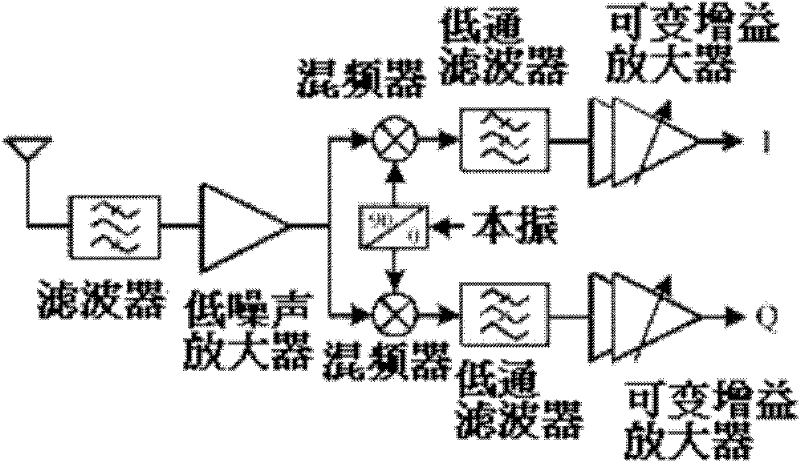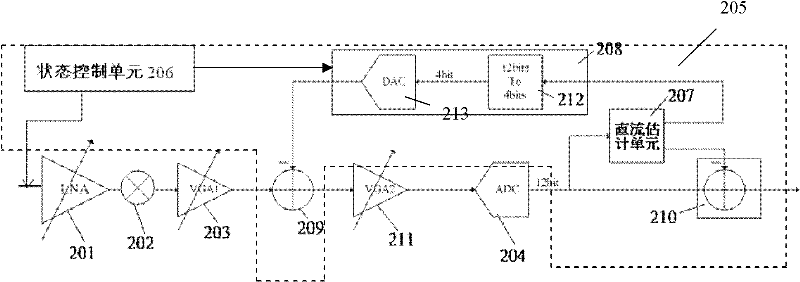Zero intermediate frequency receiver and method for eliminating DC offset of same
A zero-IF receiver, DC offset technology, applied in the field of communication, can solve the problems of low receiving sensitivity, clean baseband signal elimination, complicated circuit, etc., to avoid complexity and meet sensitivity requirements.
- Summary
- Abstract
- Description
- Claims
- Application Information
AI Technical Summary
Problems solved by technology
Method used
Image
Examples
Embodiment Construction
[0034] The implementation of the present invention is described below through specific examples and in conjunction with the accompanying drawings, and those skilled in the art can easily understand other advantages and effects of the present invention from the content disclosed in this specification. The present invention can also be implemented or applied through other different specific examples, and various modifications and changes can be made to the details in this specification based on different viewpoints and applications without departing from the spirit of the present invention.
[0035] figure 2 It is a structural block diagram of a preferred embodiment of the zero-IF receiver of the present invention. The zero-IF receiver of this specific embodiment includes a low-noise amplifier 201, a mixer 202, a first variable gain amplifier 203 (VGA1), an analog-to-digital converter 204 (ADC), and a DC offset canceling device 205, wherein the DC offset The shift and cancel d...
PUM
 Login to View More
Login to View More Abstract
Description
Claims
Application Information
 Login to View More
Login to View More - R&D
- Intellectual Property
- Life Sciences
- Materials
- Tech Scout
- Unparalleled Data Quality
- Higher Quality Content
- 60% Fewer Hallucinations
Browse by: Latest US Patents, China's latest patents, Technical Efficacy Thesaurus, Application Domain, Technology Topic, Popular Technical Reports.
© 2025 PatSnap. All rights reserved.Legal|Privacy policy|Modern Slavery Act Transparency Statement|Sitemap|About US| Contact US: help@patsnap.com



